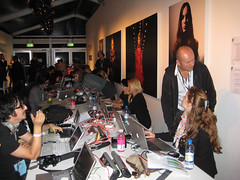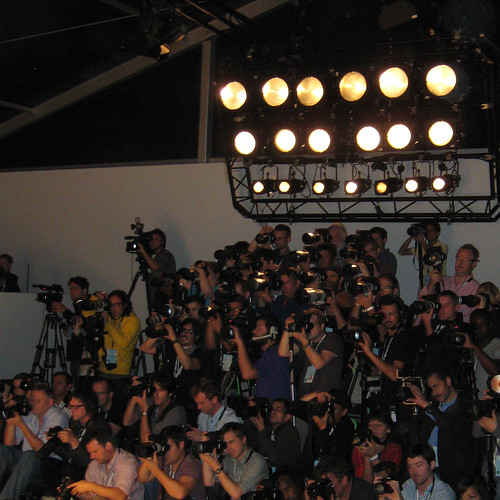This content is 13 years old. I don't routinely update old blog posts as they are only intended to represent a view at a particular point in time. Please be warned that the information here may be out of date.
Cloud this, cloud that: frankly I’m tired of hearing about “the cloud” and, judging from the debate I’ve had on Twitter this afternoon, I’m not alone.
The trouble is that the term “cloud” has been abused and has become a buzzword (gamification is another – big data could be next…).
I don’t doubt the advantages of cloud computing – far from it – it’s a fantastically powerful business model and it’s incredibly disruptive in our industry. And, like so many disruptive innovations, organisations are faced with a choice – to adopt the disruptive technology or to try and move up the value chain. (Although, in this case, why not both? Adopt the disruptive tech and move up the value chain?)
My problem with cloud marketing is not so much about over-use of the term, it’s about the mis-use of it. And that’s confused the marketplace. There is a pretty good definition of cloud from the American National Institute of Science and Technology (NIST) but it’s missing some key service models (data as a service, business process as a service) so vendors feel the need to define their own “extensions”.
My point is that cloud is about the business model, about how the service is provided, about some of the essential characteristics that provide flexibility in IT operation. That flexibility allows the business to become more responsive to change and, in turn, the CIO may more quickly deliver the services that the CEO asks of them.
It’s natural that business to business (B2B) service providers include cloud as a major theme in their marketing (indeed, in their continued existence as a business). That’s because delivery of business services and the mechanisms used to ensure that the service is responsive to business needs (on demand self-service, broad network access, resource pooling, rapid elasticity, and measured service) are crucial. Unfortunately, “the cloud” has now crossed the divide into the business to consumer (B2C) space and that’s where it all starts to turn bad.
At the point where “the cloud” is marketed to consumers it is watered down to be meaningless (ignoring the fact that “the cloud” is actually many “clouds”, from multiple providers). So often “the cloud” is really just a service offered via the Internet. Consumers don’t care about “the cloud” – they just want their stuff, when they want it, where they want it, for as little financial outlay as possible. To use an analogy from Joe Baguley, Chief Cloud Technologist, EMEA at VMware – “you don’t market the electricity grid, you market the electricity and the service, not the infra[structure]”.
I’d like to suggest that marketing cloud to consumers is pointless and, ultimately, it’s diluting the real message: that cloud is a way of doing business, not about a particular technology. What do you think?
 Lewis showed us CSC’s Teleplace, a virtual world where colleagues can collaborate (e.g. for virtual bid rooms and presentations), saving a small fortune in travel and conference call costs but, just to finish up with a powerful demo, he asked one of the audience for a postcode, took the Google Streetview URL and pasted it into a tool called Blue Mars Lite – at which point his avatar could be seen running around inside Streetview. Wow indeed! That’s one virtual world in which I have to play!
Lewis showed us CSC’s Teleplace, a virtual world where colleagues can collaborate (e.g. for virtual bid rooms and presentations), saving a small fortune in travel and conference call costs but, just to finish up with a powerful demo, he asked one of the audience for a postcode, took the Google Streetview URL and pasted it into a tool called Blue Mars Lite – at which point his avatar could be seen running around inside Streetview. Wow indeed! That’s one virtual world in which I have to play!



